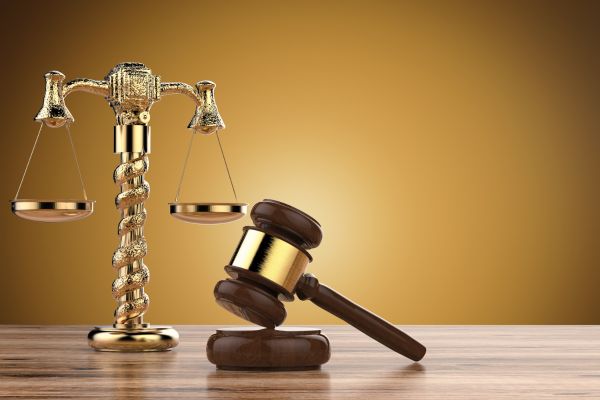“पुरुष नपुंसक नारी वा जीव चराचर कोई।सर्व भाव भज कपट तजि मोहि परम प्रिय सोई।।“
— Ramcharitmanas, Uttarakand, Verse 43.1
“Be it a man, a eunuch (third gender), a woman, or any living being—whoever worships me with sincerity and devotion, free of deceit, is dearest to me.”
From revering Ardhanareeshvara, the embodiment of gender fluidity, to ostracizing transgender individuals to the fringes of society, India’s paradoxical stance on gender identity is glaring. Transgender people face rejection at every step—first from their families when they come out, and then from society when they step out. Despite deep-rooted cultural and mythological recognition, they are often denied dignity, opportunity, and inclusion, forced into marginalized livelihoods. This stark contrast between tradition and reality exposes the urgent need for systemic change and true acceptance.
Gender Or Sex
The World Health Organization summarizes the difference between sex and gender in the following way:
Sex refers to “the different biological and physiological characteristics of males and females, such as reproductive organs, chromosomes, hormones, etc.”
Gender refers to “the socially constructed characteristics of women and men – such as norms, roles and relationships of and between groups of women and men.1
Even though the social construct might differ from society to society the basic connotation emphasized by both the words gender and sex result in two very different conceptions: one is “what you are born with” and one is “ what you feel”. Although, a common misconception is this that both the words have the same implications but that is far from the truth. Thus, gender is a social construct and can vary from sex. 2
The Indian Third Gender: Reputation
“Sex is what you are born with, gender is what you recognize and sexuality is what you discover.” This was a comment made by one of the first hijra respondents of this Study. The Transgender Persons (Protection of Rights) Act, 2019 passed by Lok-Sabha defines a transgender person as one whose gender does not match the gender assigned at birth. This includes trans-man, trans-women, gender-queer people, etc.
The term transgender / Hijras in India can be known by different terminologies based on different region and communities such as Kinnar– regional variation of Hijras used in Delhi/ the North and other parts of India such as Maharashtra, Aravani – regional variation of Hijras used in Tamil Nadu. Some Aravani activists want the public and media to use the term ‘Thirunangi’ to refer to Aravanis Kothi – biological male who shows varying degrees of ‘femininity.’ Some proportion of Hijras may also identify themselves as ‘Kothis,’ but not all Kothis identify themselves as transgender or Hijras, Shiv-Shakti – males who are possessed by or particularly close to a goddess and who have feminine gender expression, typically located in Andhra Pradesh. 5. Jogtas/Jogappas: Jogtas or Jogappas are those persons who are dedicated to and serve as a servant of Goddess Renukha Devi (Yellamma) whose temples are present in Maharashtra and Karnataka.2
Indian Mythological Roots: Tradition
The roots of transgenderism can also be found in the Indian mythology, from the mention of “shikandi” in Mahabharata as the legend goes, was born as a girl- Shikhandini, born to Drupada, the king of Panchala. She took the brave decision of transitioning to a boy to participate in the war of Kurukshetra.
Additionally, Sanskrit is regarded as the oldest language on the planet, also uses three genders: masculine, feminine and gender-neutral.
Hindu Mythology consists of numerous excerpts and legends of the cases wherein the non-conforming genders also known as hijras or kinnar, and other communities have also been part of the humungous history of India.
Hindu mythology acknowledges the power of blessings from the hijra community, a belief rooted in the Ramayana. According to legend, when Lord Rama was exiled, his devotees followed him into the forest. Before departing, he instructed the men and women among them to return to their homes. However, the hijras, who did not fit within this binary, remained. Touched by their devotion, Rama blessed them with the power to bestow boons (badhai) upon special occasions such as weddings and childbirth.
Few speak of another line in the same literary work, spoken by Ram himself, to the storytelling crow Kakabhusandi, ‘Purush napunsak nari va jiv charachar koi, sarva bhaav bhaja kapat taji mohi param priya soi’ (man, queer, woman, even plants and animals, free of meanness, full of devotion, are all equally dear to me). This celebrates equality, not just between men and women, but also between humans, plants and animals. The verse also includes the colloquial word for queer, ‘napunsak’, which literally means ‘not quite man’—it can be applied to gay, lesbian, transgender and intersex people.
Different Views In Different Countries: Education
Australia
The faculty at a school in Australia was super supportive with regards to the inclusion of transgender people, switching over to the new name and pronouns with only maybe one or two slip-ups. Most of them have never heard of the transgender, so it was mostly just repetitive explaining at a really basic level. (15 year old transgender young man, Australia).3
UK
He doesn’t call me dad, he calls me “Danny” and I think that made things a lot easier for the child. And at the school he was at the headmaster talked to all the staff and they were instructed about the same, that basically helped with the smoothly happenings of the things. (Dan, parent, identifies, identifies as FtM, United Kingdom).3
India
In 2011, a census was conducted to determine the gender ratio in India, therein the 3 categories were: Male, Female and Others, though “others” is not a respectable term, it still came across as a recognition of the existence of the third gender in India, it became the first step towards the recognition and the rights of the transgender people in India. Though the census, around 4.88 lakh people in India were identified in the transgender category.2
Later on, In December 2019, the Government of India, passed the Transgender Persons (Protection of Rights) Act, 2019 which for the first time extended constitutional rights to persons identifying as transgender. 4
Transgender people when were given the opportunity to opt for higher education were given the ability to study in universities under the alleged quota of “disadvantaged group” segment underlined in the Right to Education Act of 2009, the quota did not give them the standard of equality but rather discriminated their ability to navigate through a normal life and not get the that label to get their fundamental right of right to education. The category itself shows a nuance of biasness exerted by the policy makers via. The legislation.
In India, the concept of other does not exists in the elementary level; even in the cases of higher education the conditions are much devastating. The Indian Education system out rightly rejected the conception of the existence of the third gender, creating a taboo of the whole idea. There is no ounce of awareness with regards to the education relating to the existence of the third gender.
Bridging Tradition, Education And Reputation: The Solution
Critical trans politics that calls for a need to “analyze how power operates beyond the individual discrimination model” and what legal trans scholar, Dean Spade (2015) refers to as “liberal and rights-based frameworks”. Trans-gender people are deprived of the basic right to dignity and discriminates against them.5
Since the beginning of the traditions, we have always regarded the third gender people with respect, even to worshipping them and now as well, all the disrespect and disgrace barriers could be shattered if we indulge and implement the Indian traditions in our education and teach our future generation the importance of respect and inclusion, the reputation shall not be tarnished and that shall be the solution.
References
- Gender and Society, Sover.net, http://www.sover.net/~sharing/gender.html (last visited Jan. 26, 2025).
- Srivastava, M., Rajeev, P., Bishoyi, S., Gupta, V., & Nath, P., Marginalization: Transgenderism in the Contexts of Mythology, Fiction, Policies, and Socio-economic Aspects, 4 Int’l Res. J. of Humanities & Interdisciplinary Studies 3 (2023)
- Clare Bartholomaeus & Damien W. Riggs, Transgender People and Education (Palgrave Macmillan 2017).
- Press Information Bureau, The Transgender Persons (Protection of Rights) Act 2019 , https://static.pib.gov.in/WriteReadData/specificdocs/documents/2023/may/doc2023519200301.pdf (last visited Jan. 26, 2025).
- Martino, W., Kassen, J., & Omercajic, K. (2020). Supporting transgender students in schools: beyond an individualist approach to trans inclusion in the education system. Educational Review, 74(4), 753–772. https://doi.org/10.1080/00131911.2020.1829559
Author: Anshi Pandey is a B.A. L.L.B. (Hons.) student at University of Allahabad.







